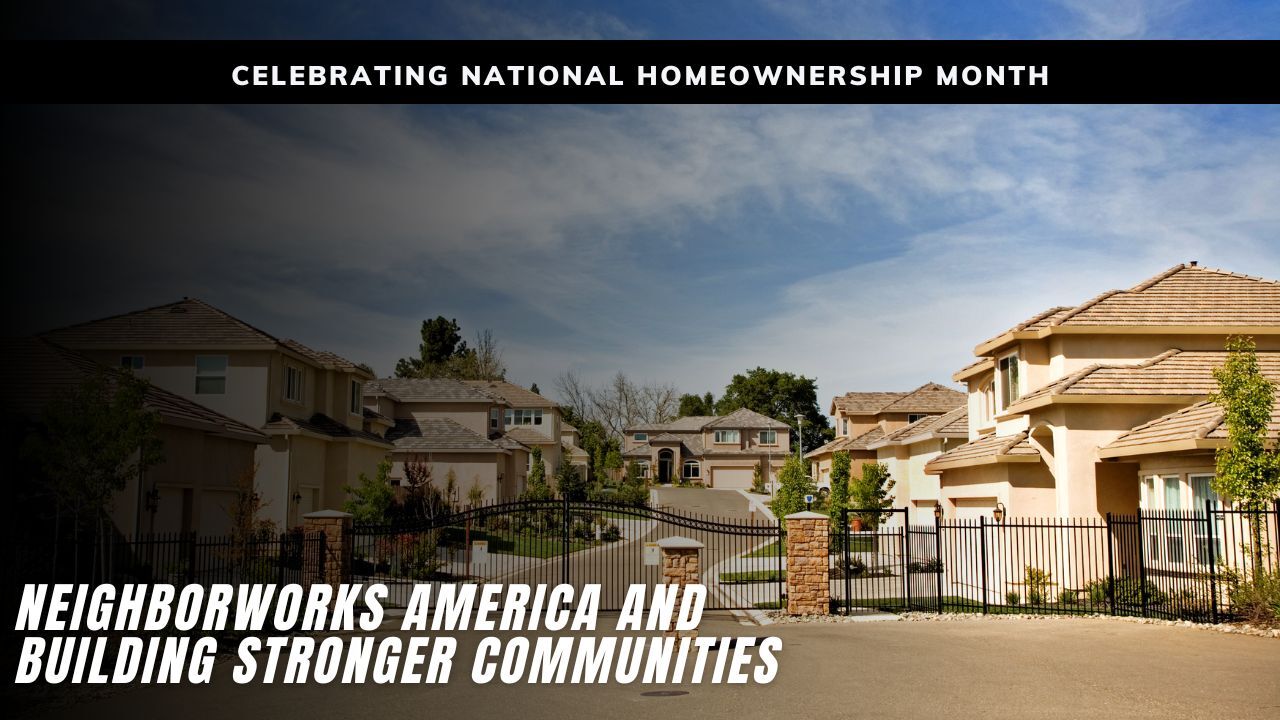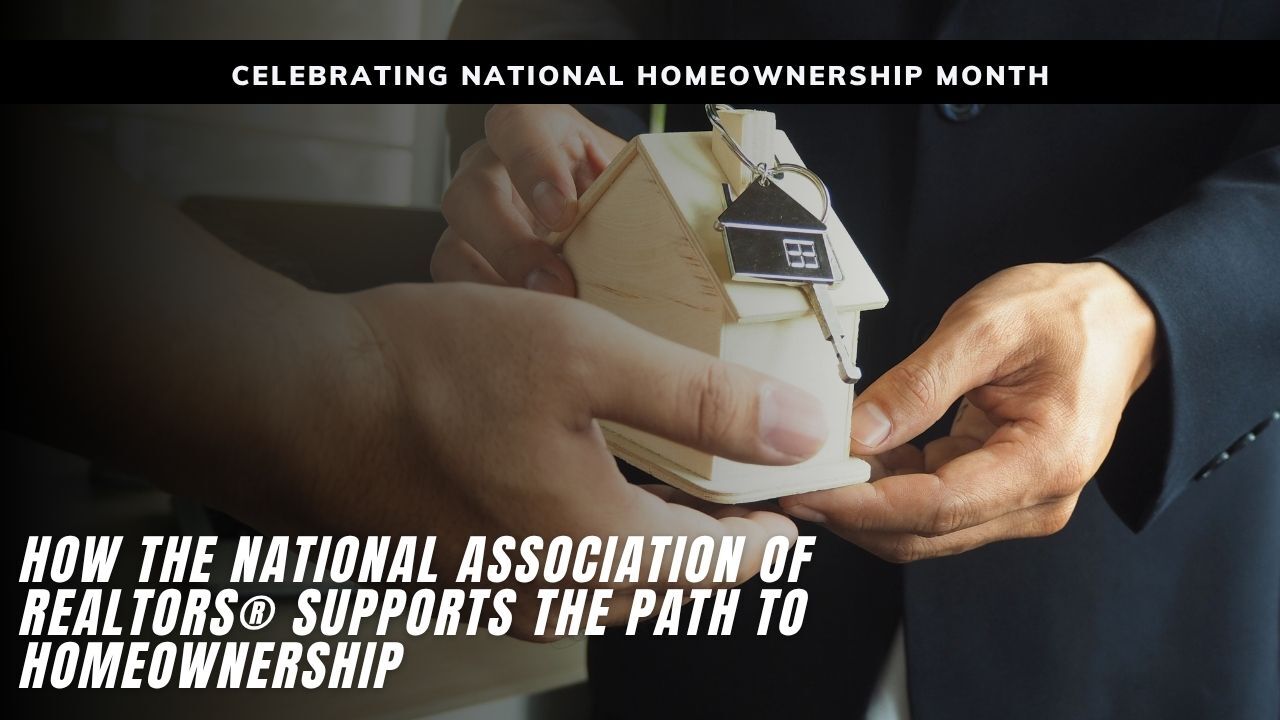 June marks National Homeownership Month, a time to celebrate the dream of owning a home and to highlight the programs and organizations that help make homeownership accessible and sustainable for all. One key player in this mission is NeighborWorks America, a national nonprofit network dedicated to promoting affordable housing through education, community development, and lending.
June marks National Homeownership Month, a time to celebrate the dream of owning a home and to highlight the programs and organizations that help make homeownership accessible and sustainable for all. One key player in this mission is NeighborWorks America, a national nonprofit network dedicated to promoting affordable housing through education, community development, and lending.
What Is NeighborWorks America?
NeighborWorks America supports a nationwide network of local organizations that provide a wide range of services designed to empower individuals and strengthen communities. Their work includes:
- Homebuyer education and counseling: Helping potential buyers understand the home buying process, budgeting, and financial management.
- Community development: Supporting efforts to revitalize neighborhoods through affordable housing projects, neighborhood improvement initiatives, and economic development.
- Affordable lending: Facilitating access to responsible financing options for low-to-moderate income families.
By partnering with over 240 local NeighborWorks organizations, NeighborWorks America ensures resources and support reach communities in need across the country.
Why NeighborWorks America Matters for Homebuyers
For many aspiring homeowners, the journey to buying a home can be complex and challenging. NeighborWorks America addresses these challenges by providing education and counseling that empower buyers to make informed decisions and build long-term financial stability. Their programs help prevent foreclosure and improve credit scores, which increases the chances of successful homeownership.
Additionally, their focus on community development means that they do not just help individuals buy homes, they help create thriving neighborhoods where families want to live, work, and grow.
Connection to National Homeownership Month
National Homeownership Month is about more than just buying a house, it is about building stable, vibrant communities and ensuring that homeownership is attainable for everyone. NeighborWorks America’s mission aligns perfectly with these goals. Their comprehensive approach combines education, financial assistance, and community revitalization to address the many barriers that can stand in the way of homeownership.
During this month, it’s important to recognize organizations like NeighborWorks America that work tirelessly to promote housing affordability and sustainability. Their efforts contribute to stronger neighborhoods and better futures for families across the country.
How You Can Get Involved or Benefit
If you’re considering buying a home, NeighborWorks America’s network of local organizations can be an invaluable resource. They offer free or low-cost homebuyer education classes, credit counseling, and financial coaching. These services prepare buyers to confidently navigate the mortgage process and maintain their homes long-term.
Real estate professionals and community advocates can also support NeighborWorks America by referring clients to their programs or partnering on community initiatives that promote affordable housing.
As we celebrate National Homeownership Month, let’s acknowledge the critical role NeighborWorks America plays in making homeownership a reality for so many families, and the ongoing work needed to create equitable, sustainable housing solutions nationwide.
 June is National Homeownership Month, a time to celebrate the value of owning a home and recognize the individuals and organizations working to make homeownership more accessible to everyone. One of the most well-known and impactful organizations in this space is Habitat for Humanity, a nonprofit that’s been helping families build and own safe, affordable homes for nearly 50 years.
June is National Homeownership Month, a time to celebrate the value of owning a home and recognize the individuals and organizations working to make homeownership more accessible to everyone. One of the most well-known and impactful organizations in this space is Habitat for Humanity, a nonprofit that’s been helping families build and own safe, affordable homes for nearly 50 years. June is National Homeownership Month, a time to celebrate the dream of owning a home and to recognize the organizations and individuals working to make that dream accessible to all. While much of the focus is rightly on financial assistance and buyer education, it’s equally important to talk about fairness, and what’s being done behind the scenes to ensure every person has an equal opportunity to purchase a home.
June is National Homeownership Month, a time to celebrate the dream of owning a home and to recognize the organizations and individuals working to make that dream accessible to all. While much of the focus is rightly on financial assistance and buyer education, it’s equally important to talk about fairness, and what’s being done behind the scenes to ensure every person has an equal opportunity to purchase a home. June marks National Homeownership Month, a time to celebrate one of the most important milestones in life, owning a home. While many organizations work to make homeownership accessible, one of the most influential is the National Association of REALTORS
June marks National Homeownership Month, a time to celebrate one of the most important milestones in life, owning a home. While many organizations work to make homeownership accessible, one of the most influential is the National Association of REALTORS
 June is National Homeownership Month, a special time to celebrate the dream of owning a home and highlight programs that help make homeownership more attainable. One standout resource for many aspiring homeowners is the National Homebuyer Fund (NHF), an organization dedicated to providing vital financial assistance to low-to-moderate income families striving to buy their first home.
June is National Homeownership Month, a special time to celebrate the dream of owning a home and highlight programs that help make homeownership more attainable. One standout resource for many aspiring homeowners is the National Homebuyer Fund (NHF), an organization dedicated to providing vital financial assistance to low-to-moderate income families striving to buy their first home.